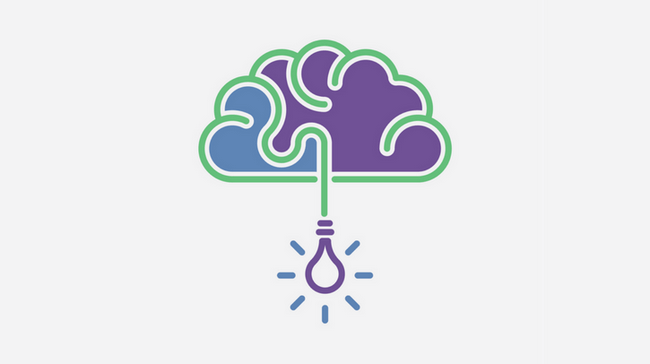While talking about business slogans, one catchword that always beats everything in the tug of war is Creative. If you are also from the same lot, undeniably, you would want to ride high in the creative and innovative race, isn’t it?
With an unswervingly changing business environment, the only way to survive in the sea of brands is by adopting innovation from time-to-time. The easiest way to create a powerful impact on your users’ minds is by serving something creative on the platter.
That being said, there is no denying the fact that creativity and innovation cannot be obtained easily. The entire process does not only demand being productive but a lot of efforts as well.
Delving more into the creativity phenomenon, it is quite essential to comprehend the profound idea of Design Thinking. This prototype-centered and user-oriented methodology primarily suit business designs, services, and products.
Design Thinking is becoming one of the most talked about concepts. Therefore, it’s the time to adopt this concept to get the most out of it. So, if you were unfamiliar with this topic yet, here is everything you should know about Design Thinking.
What is Design Thinking?
Based on people and their perception, the design thinking definition may vary. However, in simple words, it is a process that designers use to resolve intricated problems and discover satisfactory resolutions for clients.
Since design mindset is always focused on the solution, the design thinking process attracts imagination, logic, systematic reasoning, and intuition to explore possible opportunities to provide desired results to the customer.
Key Elements of Design Thinking:
Unquestionably, design thinking, if used effectively, can be one of the most useful tools. Here are the top four elements that comprise design thinking:
- Defining the Problem:
The entire process consists of defining and altering the opportunities before executing on them. For this, one must be thoroughly engrossed and immersed in the problem.
Just like a child, one must be competent enough to question every aspect until a satisfactory answer is found.
- Creating & Considering Different Options:
Most of the time, even the most proficient and well-versed team fails to solve a problem in the same way. More so, if the time is less and appropriate results are generated, it becomes even more difficult.
Regardless of how logical a solution may appear out to be, the design thinking process demands different answers for reflection in such a manner that the result always looks the same.
This stage is wholly dedicated to opportunities; therefore, different perspectives are essential. With design thinking, one can obtain better answers if five people are working on one problem in a day, instead of one person working on the issue for five days.
- Polishing Chosen Directions:
If at the initial stage, even the strongest of ideas can turn out to be vulnerable. Therefore, this stage allows the team to nurture the anticipated results and polish them to a certain extent that they become acceptable.
Design thinking process lets the potential of results to be realized by developing such an environment that favors experimentation and growth. This stage, several small ideas are combined to come to a better conclusion. And then, the process keeps on repeating until the accurate answer is discovered.
- Choose the One & Execute:
Now is the time for execution and attaining objectives. Serious examples of solutions are developed, and testing takes an intense and critical turn. Since this is the last stage, either problem is completely solved, or chances are revealed.
The end stage helps the designer to apply the methodologies of design to every situation and bring out the best result.
Why Do You Need Design Thinking?
- Emphasise on End Users:
The entire process of design thinking is meant to solve problems by keeping end users in the middle. By using this methodology, you develop such services or products that adequately fulfill the users’ needs.
Being integrally human-centric, this process tries to find out the frustrations and pain points of your users along with the solutions through which you can make their lives easier. Hence, giving your business leverage.
- It is All About Testing:
Design Thinking centralizes the viewpoint of designing, testing, and repeating. Before you invest a lot of money, efforts, and time on a particular idea, the design thinking process helps you create several replicas and get feedback from customers and users.
Although, in comparison with problem-solving linear approaches, this process is a bit complicated; however, when it comes to results, design thinking brings out the most interesting and powerful results ever.
- Creating Value with Problem Solving:
However, instead of going towards it in a traditional way, this concept uses principles of design to solve different problems, regardless of the problem size and the industry domain.
With time, the design thinking definition is continuously evolving. It is changing and challenging the way problems are solved; therefore, providing additional value to end users.
Over the period of time, design thinking has taken several jumps forward. In renowned companies like Whirlpool, Apple, and more, this concept plays an important role in making decisions. Hence, it not only enhances the experience of users but also provides value to shareholders.
Using design thinking templates and guides will not only help you save time but also gain valuable knowledge in understanding your customers, strategizing your projects, and designing amazing experiences.
With this process, you can bring out the best possible results by ideating and testing solutions, which is quite essential to understand customer needs to survive in the competitive marketplace. So, try and adopt this methodology in your business, if you haven’t till yet, and attain the best of outcomes.

